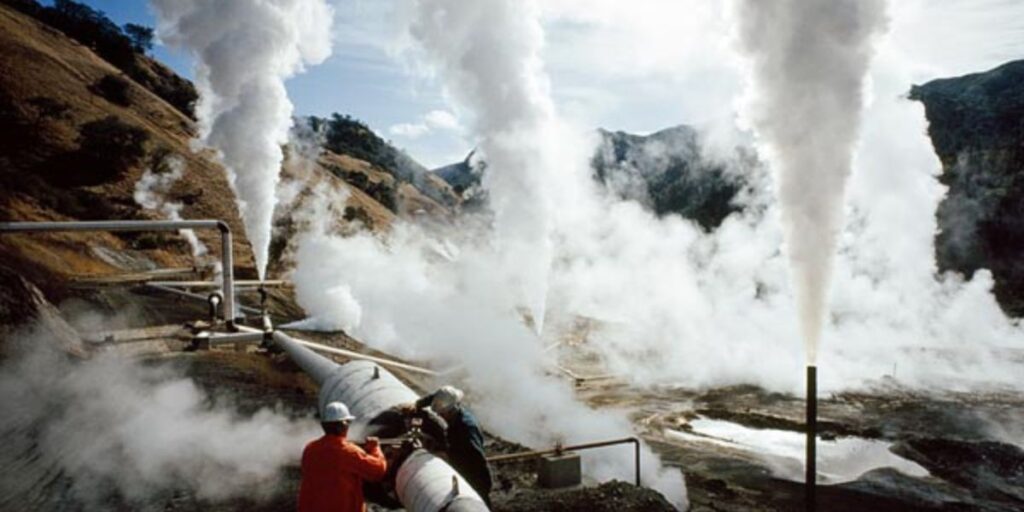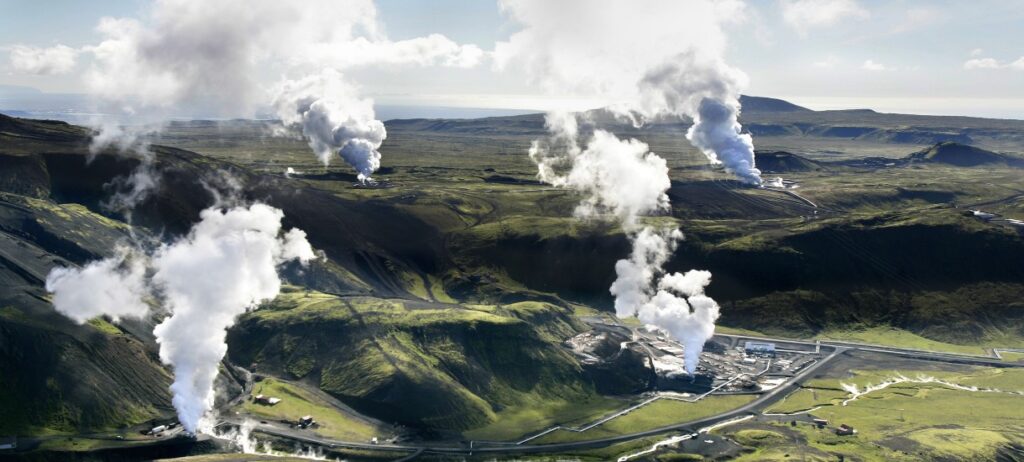The World Is Not Prepared: How AI Energy Thirst Might Tap Into Geothermal Power:- Tech corporations champing on the bit to create the most recent, best generative AI models face an uncomfortable dilemma. Data-hungry fashions like ChatGPT and Google’s Gemini depend on troves of digital materials in knowledge facilities that require huge quantities of power for processing and fixed cooling.
Some estimates recommend this swelling power demand may account for nine percent of all US electricity by the top of the last decade. That’s up from round 4 p.c as we speak, a steep improve specialists attribute partly to Big Tech’s brewing generative AI arms race. Renewable power sources like wind and photo voltaic aren’t prepared to fulfill demand alone. Instead, a lot of the brand new power may come from fossil gas sources which may undermine many of those corporations’ bold “net zero” and carbon neutral pledges.
How AI Energy Thirst Might Tap Into Geothermal Power
Tech corporations are scrambling in an effort to seek out extra renewable power to maintain these local weather objectives inside placing distance. Some are even seeking to a brand new, extra advanced form of geothermal power as a possible partial saving grace. Last week, Facebook-owner Meta announced a brand new cope with the Texas-based geothermal power startup Sage Geosystems to develop new energy vegetation potentially capable of delivering 150 megawatts of carbon-free baseload power, reportedly enough to power 70,000 homes, to Meta by the tip of the last decade.
If profitable, the bold effort might provide tech corporations a a lot wanted clear power increase to assist meet their staggering power calls for. It would additionally mark a crucial inflection level for contemporary geothermal, which is coming of age on the backs of methods and experience gleaned, perhaps mockingly, from the oil and fuel trade.

“I think that the world is not prepared for what is about to happen in terms of AI demand,” Jamie Beard, govt director of Project InnerSpace, a nonprofit centered on selling geothermal energy, informed Popular Science.
Beard mentioned the tech business and geothermal startups are at a “convergence.” After years of growth and checks trendy geothermal is able to begin serving bigger companies. Tech, in determined want of recent cleaner power sources, is able to make investments. Beard and others within the geothermal house are optimistic new startups like Sage are prepared to assist meet new power calls for, although specialists say it’s nonetheless unclear whether or not or not this nonetheless creating business can scale operations and cut back costs quick sufficient to be viable in a rapid-fire AI surroundings.
Table of Contents
Modern Geothermal: ‘It’s Not Just Iceland
Geothermal energy, at its core, isn’t precisely new. Traditionally, the observe of transferring warmth naturally saved underneath the Earth’s crust into energy was restricted to volcanos, geysers, and sizzling springs—all locations the place the warmth simmers close to the floor. That technique works for heating and power storage however is particularly restricted and accounts for less than .5% of overall US electricity generation. A wave of so-called “next generation geothermal” startups like Sage Geosystems is trying to vastly increase these geographical limitations.
Instead of locking themselves into areas with volcanic exercise, these firms survey the nation for much extra plentiful provides of sizzling stable rocks discovered underground. Taking a web page out of pure fuel extraction strategies, the geothermal firms create many fractures inside the piping sizzling rock and pour in water that will get heated to temperatures approaching 300 levels Fahrenheit. In Sage‘s case, CEO Cindy Taff instructed Popular Science they drill into rocks with a mix of water, a heavy powdery rock, and a polymer. The fracking fluid is then eliminated.
Those heated reservoirs can then be used to generate electrical energy in a turbine that reportedly creates 99% much less carbon dioxide than equally sized fossil gasoline vegetation. Details in regards to the new Sage plant powering Meta’s information facilities stays scarce. Taff mentioned they’re nonetheless working with geologists and Meta for a precise location however famous it is going to be someplace “east of the Rockies.”
Taff mentioned she expects the ability may require round 100 acres of area and a workers of round 40 or 50 to function it. A Meta spokesperson confirmed its partnership with Sage is aiming to ship as much as 150 megawatts of energy. The firm didn’t remark when requested how its investments in AI could also be altering its total vitality demand.
“As our infrastructure grows, we need a diverse portfolio of energy sources especially something like geothermal that operates steadily throughout the day,” the Meta spokesperson mentioned. “We are excited to associate with Sage on this promising know-how.

The geothermal vitality produced by Sage gained’t feed instantly into Meta servers. Instead, the spokesperson stated the vitality will go to the vitality grid the corporate’s information facilities are related to. In basic, information facilities operated by Meta and different tech corporations nonetheless absorb electrical energy produced partly by fossil fuels. Meta makes an attempt to offset these carbon emissions by matching its total annual electricity use with renewable energy purchases.
This matching course of, which frequently entails corporations buying Renewable Energy Certificates (RECs), isn’t excellent. Research exhibits it may be difficult to determine precisely the place vitality pulled from the grid is coming from, which may end up in inaccurate offsets. Still, this a number of step matching course of is how giant firms like Meta can technically declare they’re cutting down fossil fuel use on sustainability reports. Geothermal vitality will likely be another addition to Meta’s renewable offsets which they should improve as their demand for electrical energy balloons.
For Taff, a high precedence transferring ahead is burning down prices all the way down to the purpose the place geothermal is aggressive with pure fuel. Ideally, they want it to be a gorgeous vitality answer even when their patrons aren’t essentially dedicated to decreasing their carbon footprint. Initial upfront capital funding from massive tech corporations keen to indicate the world they aren’t relying solely on fossil fuels to satisfy elevated vitality calls for put geothermal corporations in a singular place to money in on hefty investments they may use to make future operation cheaper and extra accessible.
At the identical time, it’s not assured Sage, or any geothermal firm, can scale quick sufficient to satisfy huge new tech vitality calls for. Geothermal startups partnering with tech corporations might look interesting, but it surely’s price remembering the renewable energy supply will solely initially make up a small portion of these corporations’ general vitality consumption. It stays to be seen whether or not geothermal can, or ever will, make up a majority of tech’s vitality base.
“You can’t do it [geothermal] everywhere, but where we can do it, we would like to get those costs down where it is the energy or the power of choice because of the cost and because it’s clean,” Taff stated.
Fracking Tech Could Make Geothermal More Widely Available
Geothermal isn’t presently a significant power producer within the US however there are indicators that might change within the coming many years. A latest roadmap from the US Department of Energy predicts Geothermal power capability may enhance by 20 occasions present ranges by 2050. The National Renewable Energy Laboratory estimates geothermal may provide 12% of total US electrical energy by that very same date.
Expansion isn’t restricted to information facilities both. Fervo, one other Texas-based competitor within the geothermal power house which beforehand partnered with Google to create a 5 megawatt pilot plant in Nevada, is presently building out a 400 megawatt plant in Utah which is anticipated to start out promoting electrical energy to California utility firms beginning subsequent 12 months. Taff, the Sage Geosystems CEO, says they’ve additionally obtained curiosity from the US Department of Defense.

“I think geothermal is going to be a bigger piece of the [overall energy] pie,” Taff stated.
Cornell University professor and biomolecular engineering professional Jefferson Tester expressed optimism about Meta’s take care of Sage and advised Popular Science he thinks geothermal may very well be a pretty power supply each on account of its theoretical abundance and availability in contrast to wind photo voltaic that are depending on climate and time of day.
“People don’t necessarily associate looking at the ground they are walking on as a resource available to them,” Tester stated. “They can feel the wind and sun but they can’t feel geothermal.”
But geothermal isn’t a magic bullet both. Costs related to operations are nonetheless excessive. While the trade did obtain significant funding from the Biden administrations’ Inflation Reduction Act, geothermal usually has acquired much less federal assist than different renewable sources. There’s additionally actual environmental considerations. Studies present the method used for cracking open scorching underground rocks, much like these pursued by pure fuel fracking corporations, may result in disruption or “induced seismicity.
Another phrase for that’s earthquakes. Reports hyperlink new geothermal strategies to a magnitude 5.5 earthquake in South Korea in 2017 which injured dozens of individuals. When requested about potential earthquakes, Beard says these considerations appeared “slightly overblown” and could also be prevented by firms drilling away from fault traces.
“I think that any type of risk like seismicity or concerns with fracking can be managed when done appropriately,” Beard mentioned.
AI Energy Demands Are Threatening Tech’s Climate Goals
xAI, the AI firm based by billionaire Tesla CEO Elon Musk, lately drew the ire of activists in Tennessee for allegedly using gas turbines to energy its new knowledge facilities in Memphis, Tennessee, and subsequently worsening town’s ongoing smog points. Google, in the meantime, lately released a report saying its general emissions had really elevated by 13% in 2023 in comparison with the yr earlier than regardless of its pledge of attending to web zero by 2023. That improve, the report famous, was turbocharged by vitality demand for AI tasks.
Experts talking with Popular Science broadly agreed the subsequent 5 to 10 years may play a vital function in figuring out whether or not or not trendy geothermal can truly acquire traction as a viable different to fossil fuels. The sudden demand for brand spanking new, non fossil-fuel power brought on by the AI second means tech companies specifically could also be extra prepared to open up their deep wallets to assist the business.
At the identical time it’s unclear whether or not the brand new crops and the theoretical abundance of scorching rock will create sufficient dependable power quick sufficient to satisfy the second. Geothermal may mature right into a viable, cleaner different to fossil fuels at scale however it’ll require a degree of endurance and persistence tech corporations specifically aren’t precisely recognized for. Oil and fuel suppliers, in the meantime, loom ever current within the background, greater than prepared to fireplace up their crops to satiate AI’s ravenous power urge for food.
The World Is Not Prepared: How AI Energy Thirst Might Tap Into Geothermal Power
Read More:-
- India Generates Highest Plastic Pollution In World: Solution From New Study
- Google Task Manager: How To Manage Task in Google
- How Deep Is The Ice In Antarctica
- Double ISmart Review

